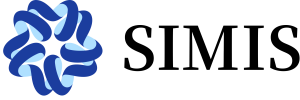Maximal Buchstaber Numbers and Toric Wedge Induction
Organizers
Speaker
Suyoung Choi
Time
Thursday, June 6, 2024 2:30 PM - 3:30 PM
Venue
A3-4-101
Online
Zoom 928 682 9093
(BIMSA)
Abstract
For an \((n-1)\)-dimensional simplicial complex \(K\) with \(m\) vertices, the moment-angle complex \(\mathbb{Z}_K\) admits a canonical action of the \(m\)-dimensional torus \(T^m\). The Buchstaber number \(s_K\) is the maximal integer \(r\) for which there exists a subtorus \(H\) of rank \(r\) acting freely on \(\mathbb{Z}_K\). It is known that \(1 \leq s_K \leq m-n\). If \(s_K\) is maximal, i.e., \(s_K = m-n\), the quotient \(\mathbb{Z}_K / H\) is related to many important mathematical objects such as toric manifolds or quasitoric manifolds.
In this talk, we introduce an effective method known as toric wedge induction to study \(K\) admitting a maximal Buchstaber number and to prove certain properties of (quasi)toric manifolds that have a specific Picard number. This method is inspired by the research on classifying toric manifolds conducted by the speaker and Hanchul Park, which uses a process called the wedge operation in combinatorics. We will share some examples where the toric wedge induction method has been used to address various unresolved issues with toric manifolds that have a Picard number of 4 or less.
In this talk, we introduce an effective method known as toric wedge induction to study \(K\) admitting a maximal Buchstaber number and to prove certain properties of (quasi)toric manifolds that have a specific Picard number. This method is inspired by the research on classifying toric manifolds conducted by the speaker and Hanchul Park, which uses a process called the wedge operation in combinatorics. We will share some examples where the toric wedge induction method has been used to address various unresolved issues with toric manifolds that have a Picard number of 4 or less.




